

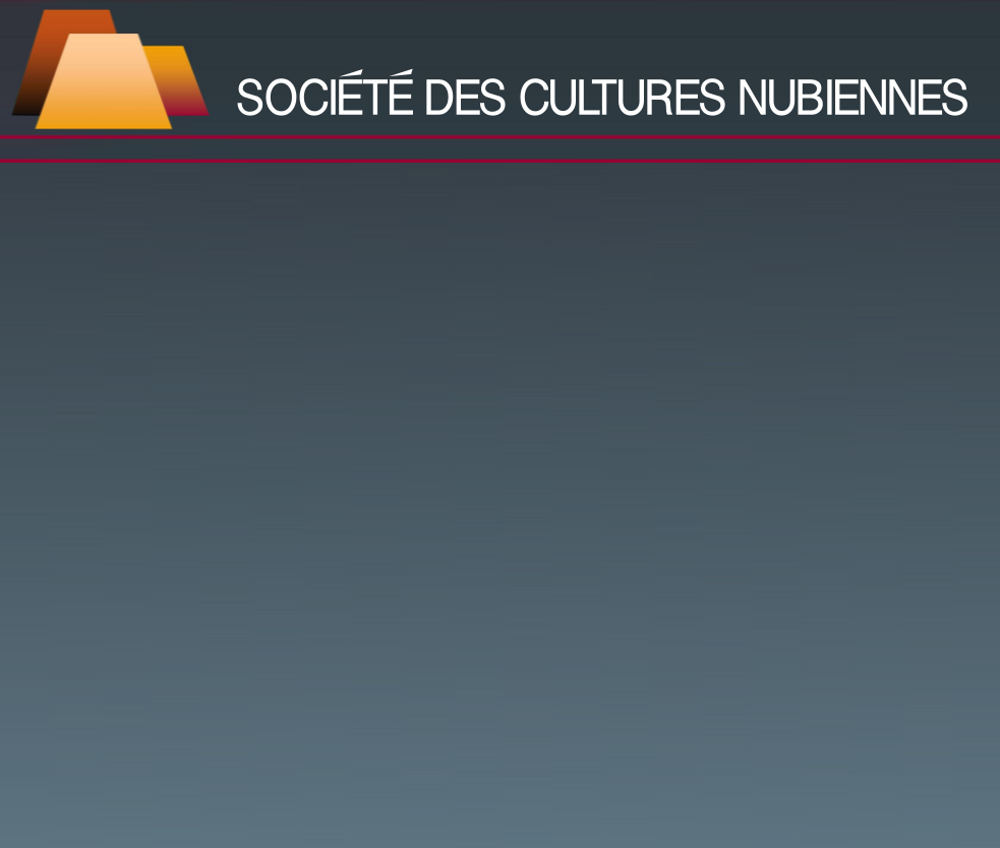
|
MUSAWWARAT ES-SUFRA
Located some twenty or more kilometres to the north-east of Naga, Musawwarat es-Sufra is a magical place. A great plain of thorn trees and bushes is enclosed by a ring of mountains, providing the setting for a site of great beauty. Its character is essentially tied to the Meroitic civilisation. When he discovers the site in 1822, Frederic Caillaud could not resist the urge to leave to posterity an inscription commemorating his visit. The Institut für Sudanarchäologie und Ägyptologie, Humboldt Universität zu Berlin (Humboldt University at Berlin) is in charge of the site. A campaign of work began in 1995 and is continuing the excavations that were left unfinished during the 60s. Should we think of Musawwarat as beginning during the Kerma Period, in the II Millennium BC? During the Meroitic, the site had several functions. It was a place of commerce for the supply of elephants for defensive purposes. It was a great centre of pilgrimage for the inhabitants of the Nile and Atbara river valleys: divine powers such as the elephant god were worshipped there. Lastly, it was a royal residence, the sacred nuptials of the king and queen were celebrated there, as were those of the Egyptian rulers during the feast of Opet at Luxor. The extent of the cult area is impressive. It includes, in the current state of our knowledge, several sanctuaries within the 'Great Enclosure', enclosed by high walls, and the temple of Apedemak, located outside the enclosure. The excavations have also unearthed several cemeteries. The Great Enclosure is one of the most monumental complexes in Sudan with a perimeter of 1200 meters. The visitor will be intrigued by the numerous ramps that lead to terraces where sanctuaries have been erected. Then most obvious is the one of the elephant which follows the plan of the Meroitic temples with a simple cella surrounded by a colonnade. The representation of an elephant, sculpted in the round, is included in the wall of the sacred area. There is also a temple dedicated to Isis (temple 800). Another is consecrated to the gods Arensnuphis and Sebiumeker (temple 300) and has a representation of an elephant, but the winged disc above the entrance lintel is closer to Egyptian iconography. Arensnuphis, a deity that fights negative forces, wears a cap with four stiff feathers. The god Sebiumeker is wearing a crown related to that of the Egyptian rulers symbolising Upper and Lower Egypt. The temple of Apedemak predates by two centuries that of Naga and was built by the king Arnekhamani towards the end of the III century before our era. A remarkable work of restoration of the temple was undertaken by Friedrich and Ursula Hintze between 1963 and 1980. In 2004 the archaeologist Steffen Wenig unearthed, on the axis of the temple, elements that might have belonged to a kiosk. This small structure may have been used on special feast days. At Musawwarat es-Sufra, Naga and Meroe, one can still make out the location of ancient large basins for the retention of rain water, the hafirs. They allow for the irrigation of land located several tens of kilometres from the Nile valley that did not directly benefit from the floods.
|
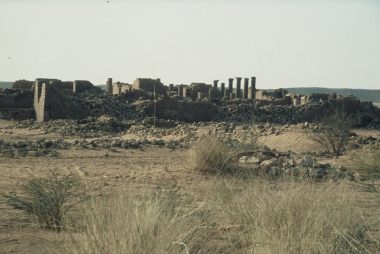 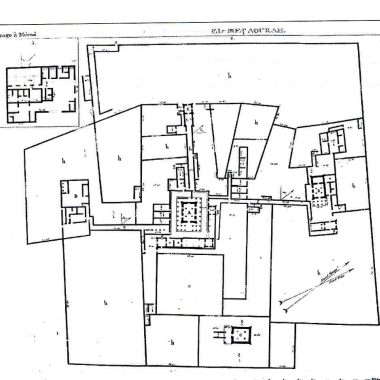 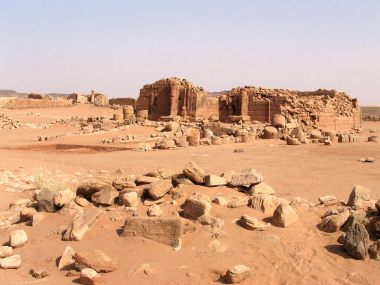 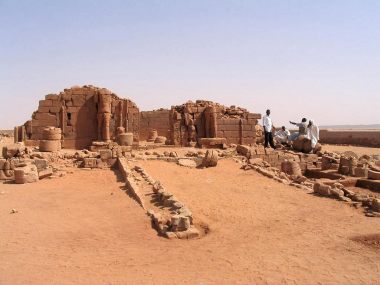 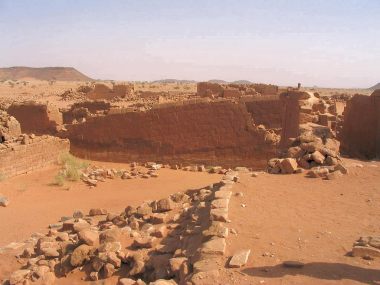 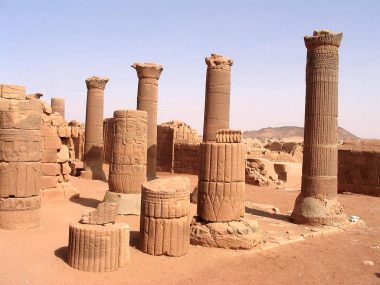 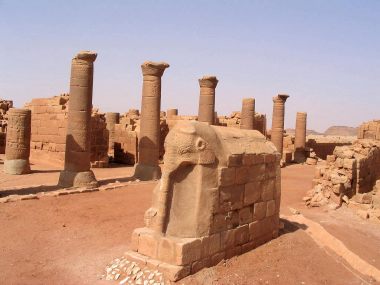 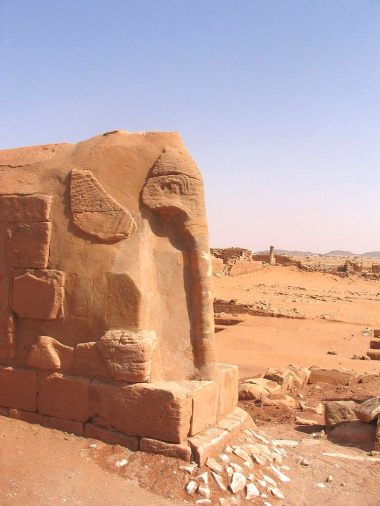 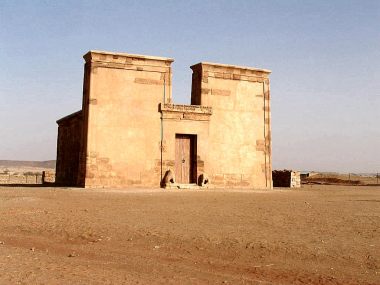 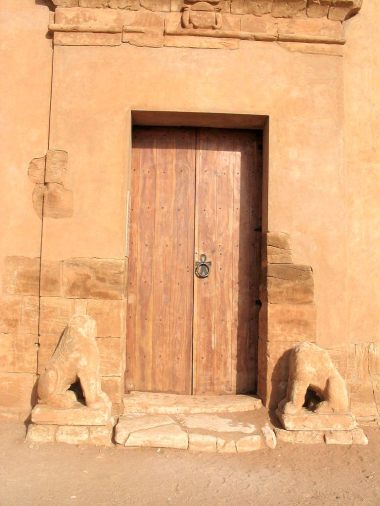 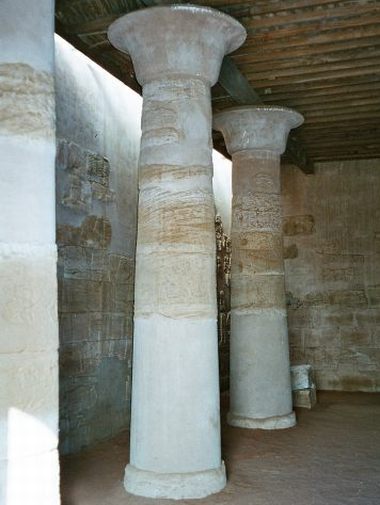 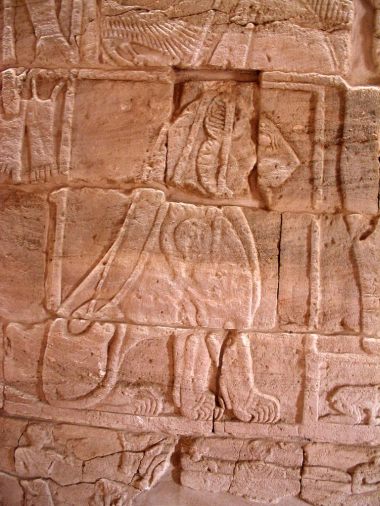 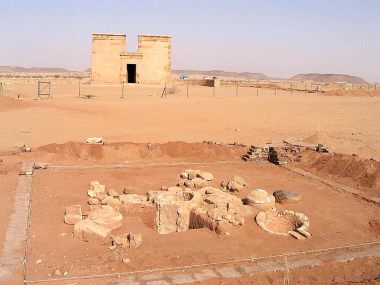 General view of the temples ruins in the Great Enclosure at Musawwarat (See the map on the next picture) / Vue générale des vestiges des temples de la Grande Enceinte à Musawwarat (cf.plan sur photo suivante)
Map of the Musawwarat ruins at the entrance of the Great Enclosure / Plan des vestiges des temples à l'entrée de la Grande Enceinte de Musawwarat
Some ruins of the Great Enclosure, with, in the front rank, the Sebioumeker's temple / Ensemble des vestiges de la Grande Enceinte avec, au premier plan, le temple de Sébioumeker
Sebioumeker's temple with its access slope / Temple de Sebioumeker avec sa rampe d'accès
Numerous access slopes allowing, probably during the processions, to reach the temples / Les nombreuses rampes d'accès qui permettaient, probablement lors des processions, d'accéder aux temples
Elephant's temple of the Great Enclosure at Musawwarat / Temple de l'éléphant de la Grande Enceinte à Musawwarat
Elephant's temple of the Great Enclosure at Musawwarat / Temple de l'éléphant de la Grande Enceinte à Musawwarat
High relief of the deity elephant in the holy area of its temple at Musawwarat / Haut-relief de la divinité éléphant dans l'aire sacrée de son temple à Musawwarat
Lion temple of Apedemak at Musawwarat, situated not far away from the Great Enclosure / Temple du lion d'Apédémak de Musawwarat situé non loin de la Grande Enceinte
The entrance door of the lion temple of Apedemak at Musawwarat / La porte d'entrée du temple du lion Apédémak à Musawwarat
Inside of the lion temple of Apedemak which has only one room with columns, specific of the meroitic sanctuaries / Intérieur du temple du lion d'Apédémak, qui se compose d'une salle unique à colonnes, spécificité des constructions méroitiques
Lion bas-relief decorating the king's throne inside the Apedemak's temple at Musawwarat / Bas-relief du lion ornant le trône du roi dans le temple d'Apédémak à Musawwarat
S. Wening's 2003 diggings (German Mission) in front of the lion temple at Musawwarat / Fouilles de 2003 de S. Wening de la Mission Allemande devant le temple du lion à Musawwarat
|